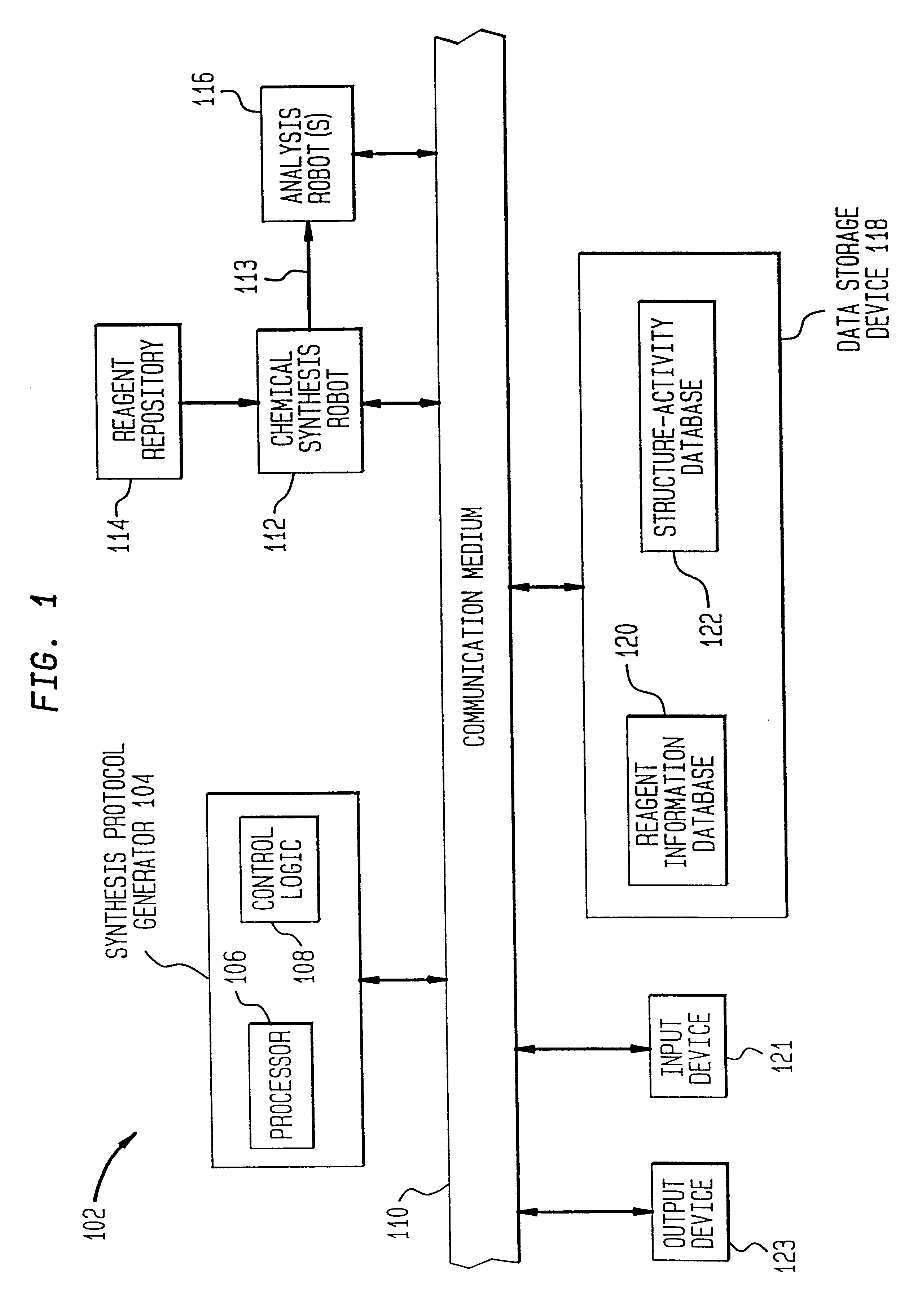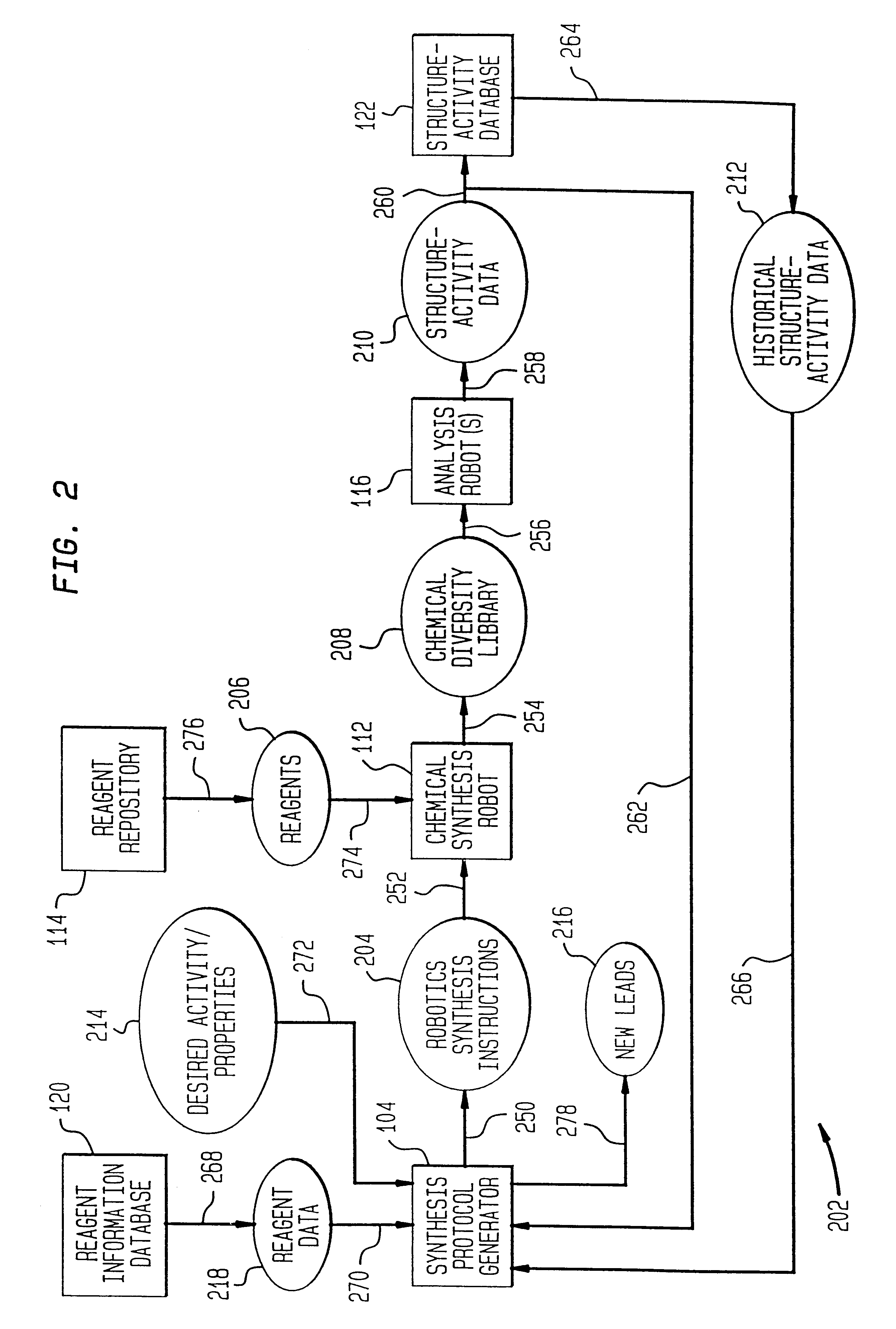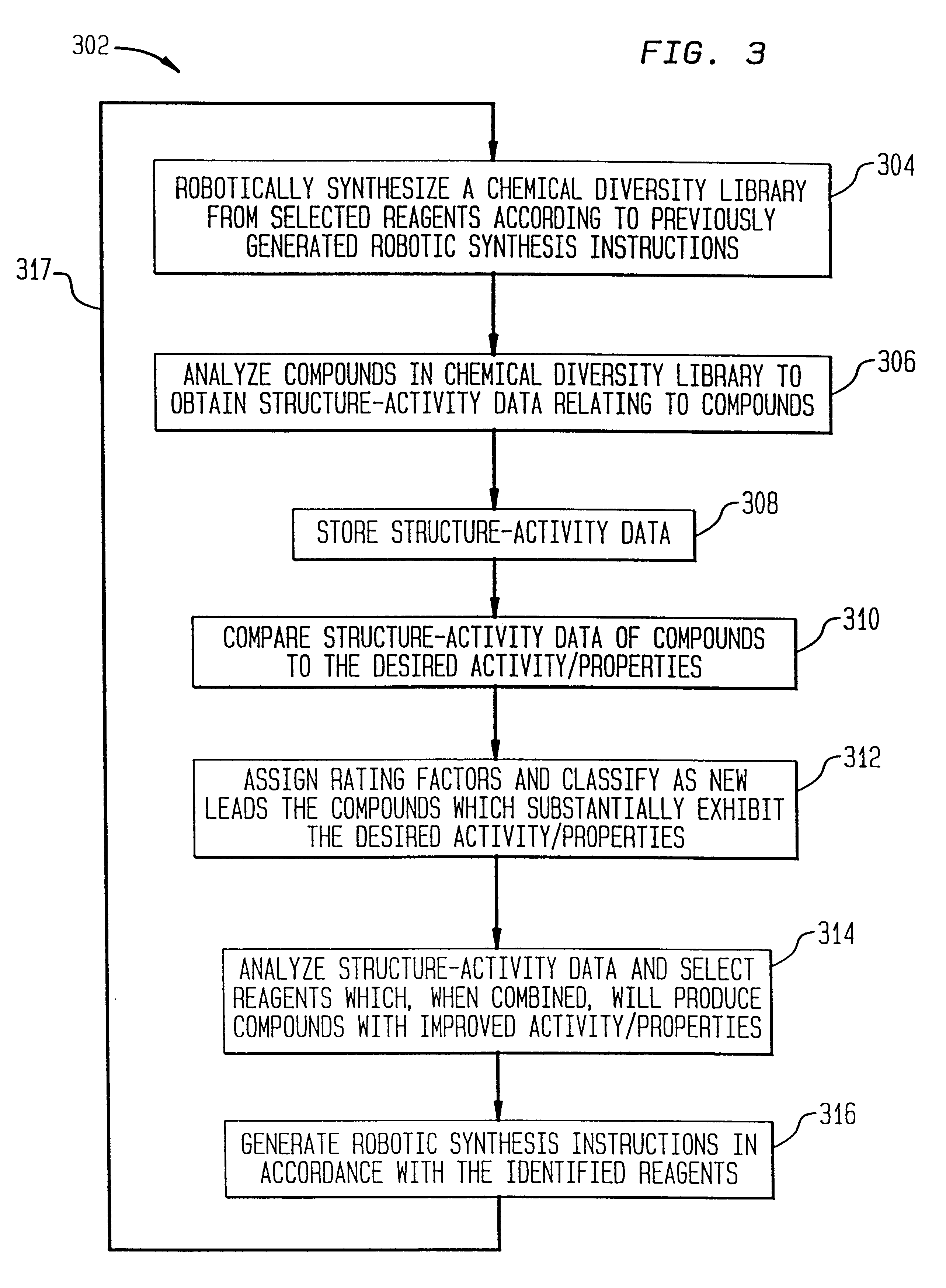There are a number of flaws with this conventional approach to lead generation, particularly as it pertains to the discovery of bioactive compounds.
One deficiency pertains to the first step of the conventional approach, i.e., the identification of lead compounds.
Traditionally, the search for lead compounds has been limited to an analysis of compound banks, for example, available commercial, custom, or natural products chemical libraries.
Consequently, a fundamental limitation of the conventional approach is the dependence upon the availability, size, and
structural diversity of these chemical libraries.
Thus, the conventional approach is limited by the relatively small
pool of previously identified chemical compounds which may be screened to identify new lead compounds.
However, as stated by Rudy M. Baum in his article "Combinatorial Approaches Provide Fresh Leads for
Medicinal Chemistry," C&EN, Feb. 7, 1994, pages 20-26, "chemical intuition, at least to date, has not proven to be a particularly good source of lead compounds for the
drug discovery process."
Another deficiency pertains to the second step of the conventional approach, i.e., the creation of variants of lead compounds.
For example, it typically takes many chemist years to produce even a small subset of the compound variants for a
single lead compound.
Overall, the traditional approach to new lead generation is an inefficient, labor-intensive,
time consuming process of limited scope.
To date, most work with combinatorial chemical libraries has been limited only to peptides and oligonucleotides for the purpose of identifying bioactive agents; little research has been performed using non-
peptide, non-
nucleotide based combinatorial chemical libraries.
However, there is no
consensus on how such compounds (identified as having desirable bioactive properties and desirable profile for medicinal use) can be used.
This is unlikely, however, for a number of reasons.
Second, such compounds would be very expensive to manufacture, since the chemical building blocks from which they are made most likely constitute high priced reagents.
However, the use of combinatorial chemical libraries in this manner does not solve all of the problems associated with the conventional lead generation procedure.
Specifically, the problem associated with manually synthesizing variants of the lead compounds is not resolved.
In fact, the use of combinatorial chemical libraries to generate lead compounds exacerbates this problem.
However, it is more difficult,
time consuming, and costly to synthesize variants of larger compounds.
Furthermore, the real issues of structural and functional group diversity are still not directly addressed; bioactive agents such as drugs and agricultural products possess diversity that could never be achieved with available
peptide and
oligonucleotide libraries since the available
peptide and
oligonucleotide components only possess limited functional group diversity and limited topology imposed through the inherent nature of the available components.
Thus, the difficulties associated with synthesizing variants of lead compounds are exacerbated by using typical peptide and
oligonucleotide combinatorial chemical libraries to produce such lead compounds.
The issues described above are not limited to bioactive agents but rather to any lead generating paradigm for which a
chemical agent of defined and
specific activity is desired.
This task is combinatorially explosive, i.e., in all but the simplest cases, N is far too large to allow for the construction and evaluation of each individual subset given current
data processing technology.
Thus, the
phrase "
computer control" does not rule out the possibility that optional human intervention may be involved in the process.
 Login to View More
Login to View More 


